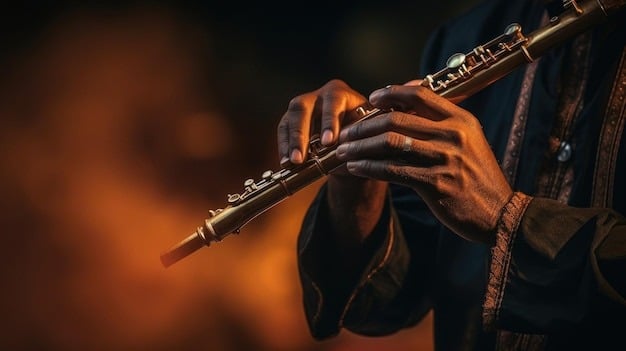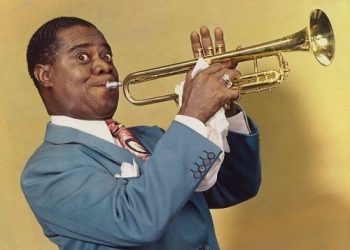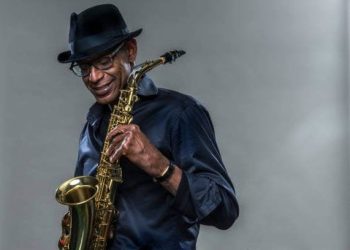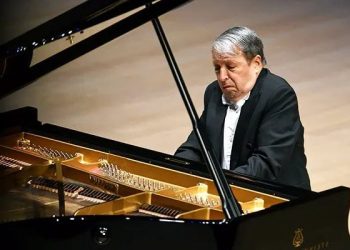The ethereal melodies and soulful timbre of the clarinet have captivated audiences for centuries, and its virtuosos have left an indelible mark on the world of music. In this exploration of the “15 Best Clarinet Players of All Time,” we embark on a journey through the annals of musical history, uncovering the mastery and innovation of the individuals who have elevated the clarinet to unparalleled heights. From the classical realms to jazz and beyond, these maestros have not only shaped the instrument’s sonic landscape but have also influenced the very fabric of musical expression. Each player on this illustrious list has a unique story, a distinctive style, and a profound impact on the evolution of clarinet performance. As we delve into their remarkable contributions, we discover the virtuosity that transcends genres and time periods, showcasing the versatility of the clarinet as an instrument capable of conveying the deepest emotions and pushing the boundaries of artistic expression. Join us on this sonic odyssey as we celebrate the brilliance, innovation, and enduring legacy of the 15 individuals who stand as the paragons of clarinet mastery, leaving an indelible imprint on the rich tapestry of musical history.
1. Stanley Drucker
Stanley Drucker stands as a towering figure in the realm of clarinet performance, earning widespread acclaim for his exceptional artistry and virtuosity. Born in 1929, Drucker enjoyed a distinguished career spanning over six decades, primarily as the principal clarinetist of the New York Philharmonic Orchestra. Renowned for his flawless technique and nuanced expression, Drucker’s interpretations of classical masterpieces have left an indelible mark on the world of classical music. His command over the instrument, coupled with an innate musicality, elevated him to the status of a living legend. Drucker’s contributions extend beyond the concert stage; he has inspired countless musicians through his teaching at prestigious institutions like the Juilliard School and the Manhattan School of Music, leaving an enduring legacy in the world of clarinet pedagogy.
In addition to his orchestral achievements, Stanley Drucker’s versatility is evident in his forays into chamber music and solo performances. His extensive repertoire spans a wide range of musical styles, showcasing his adaptability and innovative spirit. Drucker’s commitment to pushing the boundaries of clarinet performance has cemented his place as one of the best clarinet players of all time, leaving a lasting impact on the instrument’s legacy and influencing generations of aspiring clarinetists.
2. Jack Brymer
Jack Brymer, another luminary in the pantheon of clarinet virtuosos, brought a distinctive voice and technical prowess to the instrument. Born in 1915, Brymer gained international recognition as the principal clarinetist of the London Symphony Orchestra, a position he held for an impressive 23 years. His contribution to the classical music scene extends beyond his orchestral role, with Brymer emerging as a sought-after soloist and chamber musician. His interpretations of Mozart and Brahms, in particular, are celebrated for their clarity, tonal beauty, and a remarkable blend of lyricism and precision.
Brymer’s impact on the world of clarinet playing is not only evident in his performance but also in his commitment to education. Serving as a professor at the Royal Academy of Music, he influenced a new generation of clarinetists, shaping their artistic sensibilities. Beyond the classical realm, Brymer’s versatility shone through in collaborations with jazz musicians, showcasing his ability to traverse genres seamlessly. With a career marked by innovation and a deep commitment to the craft, Jack Brymer rightfully holds a place among the best clarinet players of all time, leaving an enduring legacy that resonates across genres and continues to inspire aspiring musicians.
3. Martin Fröst
Martin Fröst, a contemporary virtuoso, has carved a distinctive niche for himself in the realm of clarinet performance. Born in 1970, Fröst has earned global acclaim for his exceptional musicianship and innovative approach to the instrument. As a soloist, he has mesmerized audiences with his charismatic stage presence and a rich, nuanced tone that spans the entire spectrum of emotions. His interpretations of classical works, as well as his collaborations with contemporary composers, showcase a fearless exploration of the clarinet’s expressive potential.
In addition to his solo career, Martin Fröst has made significant contributions as an orchestral player and chamber musician. His tenure as the principal clarinetist with renowned orchestras, including the Swedish Radio Symphony Orchestra, reflects not only his technical prowess but also his ability to seamlessly integrate into diverse musical ensembles. Fröst’s commitment to expanding the clarinet repertoire is evident through collaborations with composers such as Anders Hillborg, adding a modern dimension to the instrument’s repertoire.
Beyond his musical achievements, Martin Fröst is recognized for his charismatic advocacy for classical music. His engaging performances and efforts to make classical music more accessible to wider audiences have further solidified his status as one of the prominent clarinet players of his generation. Fröst’s innovative spirit and dedication to pushing the boundaries of his artistry make him a noteworthy figure in the ongoing legacy of great clarinet players.
4. Karl Leister
Karl Leister, born in 1937, stands as a distinguished figure in the world of classical clarinet playing, earning acclaim for his exceptional technique, interpretive depth, and rich musicality. Serving as the principal clarinetist of the Berlin Philharmonic Orchestra for over three decades, Leister’s contributions to orchestral music are immeasurable. His collaboration with renowned conductors and orchestras has left an indelible mark on the interpretation of classical masterpieces, showcasing a blend of technical precision and heartfelt expression.
What sets Karl Leister apart is not only his illustrious orchestral career but also his success as a soloist and chamber musician. His extensive repertoire spans a wide range of musical styles, from classical to contemporary, demonstrating his versatility and commitment to musical exploration. Leister’s masterful control over the clarinet’s expressive capabilities, combined with a warm and resonant tone, has solidified his place among the most revered clarinetists in the history of the instrument.
As a pedagogue, Karl Leister has played a pivotal role in shaping the next generation of clarinetists. His teaching career, including positions at renowned institutions such as the Hochschule für Musik Hanns Eisler in Berlin, reflects his dedication to passing on his wealth of knowledge and experience. Karl Leister’s enduring impact on the world of clarinet playing, both through his performances and mentorship, cements his status as one of the best clarinet players of all time.
5. Larry Combs
Larry Combs, born in 1949, has left an indelible mark on the world of clarinet playing, earning recognition for his exceptional artistry and distinguished career. Renowned as the principal clarinetist of the Chicago Symphony Orchestra for an impressive 30 years, Combs’ contributions to the orchestral realm have been characterized by his impeccable technique and lyrical expressiveness. His nuanced interpretations of a vast classical repertoire, from Mozart to contemporary works, have captivated audiences and fellow musicians alike.
Combs’ influence extends beyond his orchestral role, as he has been hailed as a highly accomplished soloist and chamber musician. His collaborations with esteemed artists and ensembles have showcased his versatility, allowing him to navigate diverse musical genres with ease. Combs’ commitment to promoting new music is evident in his collaborations with contemporary composers, contributing to the expansion of the clarinet repertoire.
In addition to his performing career, Larry Combs has made significant contributions as an educator. Serving as a faculty member at prestigious institutions like the Chicago College of Performing Arts, his mentorship has shaped the development of numerous aspiring clarinetists. Combs’ dedication to both the traditional and innovative aspects of clarinet playing, coupled with his profound impact on musical education, solidifies his place among the best clarinet players of all time.
6. Sabine Meyer
Sabine Meyer, born in 1959, is a renowned German clarinetist celebrated for her virtuosity, artistry, and significant contributions to the world of classical music. As one of the most distinguished female clarinetists, Meyer has played a pivotal role in breaking gender barriers within the traditionally male-dominated field. Her illustrious career includes serving as the principal clarinetist for esteemed orchestras such as the Berlin Philharmonic Orchestra and the Bavarian Radio Symphony Orchestra.
Meyer’s performances are marked by a captivating blend of technical brilliance and expressive depth. Her interpretations of classical repertoire, ranging from Mozart to contemporary works, exhibit a unique sensitivity and a refined musicality. Beyond her orchestral engagements, Sabine Meyer has achieved acclaim as a soloist and chamber musician, collaborating with prominent ensembles and fellow artists.
In addition to her extraordinary performing career, Sabine Meyer has made notable contributions to clarinet education. Serving as a professor at institutions like the Lübeck Academy of Music, her commitment to nurturing the next generation of musicians is evident. Meyer’s influence extends beyond the boundaries of classical music, as she has explored collaborations with jazz musicians, showcasing her versatility and open-minded approach to musical genres.
Sabine Meyer’s impact on the clarinet world is not only defined by her exceptional playing but also by her trailblazing efforts in promoting diversity and inclusion. Her enduring legacy as a performer, educator, and advocate for the clarinet arts secures her a distinguished place among the best clarinet players of all time.
7. Richard Stoltzman
Richard Stoltzman, born in 1942, is a celebrated American clarinetist renowned for his virtuosity, versatility, and pioneering contributions to the world of classical music. Over the course of his distinguished career, Stoltzman has garnered widespread acclaim for his exceptional technique, expressive interpretations, and a genre-spanning repertoire that extends from classical to jazz and beyond.
Stoltzman’s artistry is characterized by a warm, lyrical tone and an ability to convey deep emotional resonance through his playing. As a soloist, he has performed with major orchestras worldwide, captivating audiences with his charismatic stage presence and innovative interpretations. His exploration of contemporary music and collaborations with leading composers have pushed the boundaries of the clarinet’s possibilities, contributing to the instrument’s evolving repertoire.
Notably, Richard Stoltzman has made significant strides in popularizing the clarinet in non-traditional settings. His ventures into jazz and crossover genres have demonstrated the instrument’s adaptability and versatility, attracting a broader audience to classical music. Stoltzman’s collaborations with jazz legends and popular artists showcase his commitment to bridging musical genres and expanding the reach of the clarinet.
As an educator, Stoltzman has imparted his vast knowledge and passion for music to students at institutions such as Boston University. His dedication to music education has had a lasting impact on aspiring clarinetists, fostering a new generation of musicians with a deep appreciation for the instrument. Richard Stoltzman’s multifaceted career, from classical virtuoso to genre-defying collaborator, secures his place among the best clarinet players of all time.
8. Anthony McGill
Anthony McGill, born in 1979, is a highly acclaimed American clarinetist known for his exceptional musicianship, expressive performances, and significant contributions to the classical music world. As the principal clarinetist of the New York Philharmonic, McGill has garnered praise for his remarkable artistry, contributing to the orchestra’s renowned sound with his clear tone and nuanced interpretations.
McGill gained widespread recognition beyond the orchestral realm through his impactful solo career. His performances are characterized by a captivating blend of technical precision and emotional depth, drawing audiences into the essence of the music. McGill’s commitment to expanding the clarinet repertoire is evident in his collaborations with contemporary composers, showcasing a dedication to the exploration of new musical possibilities.
An advocate for diversity and inclusion in classical music, Anthony McGill holds a historic significance as the first African American principal player in the New York Philharmonic’s history. His efforts to promote equity in the classical music world, combined with his exceptional talent, have positioned him as a trailblazer and role model for aspiring musicians from underrepresented backgrounds.
In addition to his orchestral and solo endeavors, McGill is actively involved in educational initiatives. Serving as a faculty member at esteemed institutions like the Juilliard School, he imparts his expertise to the next generation of clarinetists. Anthony McGill’s multifaceted contributions, from his outstanding performances to his advocacy for diversity and education, solidify his place among the best clarinet players of his generation.
9. Buddy DeFranco
Buddy DeFranco, born in 1923, was an iconic American jazz clarinetist whose virtuosity and innovative contributions left an enduring impact on the world of jazz. Renowned for his technical prowess and improvisational skills, DeFranco played a pivotal role in the evolution of the clarinet as a prominent instrument in the jazz genre.
DeFranco’s career soared during the big band era, and he later became a leading figure in small group settings, collaborating with jazz legends like Count Basie and Art Tatum. His fluid and expressive playing style, marked by rapid, articulate runs and a warm tone, showcased the clarinet’s versatility in the dynamic world of jazz improvisation.
As a soloist, Buddy DeFranco pushed the boundaries of traditional jazz clarinet playing, embracing bebop and post-bop elements. His innovative approach, characterized by intricate phrasing and melodic creativity, earned him acclaim among both jazz enthusiasts and fellow musicians. DeFranco’s adaptability to various jazz styles and his ability to seamlessly blend with different ensembles contributed to his longevity and prominence in the jazz scene.
Beyond his performances, Buddy DeFranco also served as an influential educator, sharing his knowledge and passion for jazz with aspiring musicians. His legacy as a jazz clarinet virtuoso and a mentor to the next generation cements his place among the best clarinet players in the history of jazz. Buddy DeFranco’s contributions continue to resonate, shaping the trajectory of jazz clarinet playing for years to come.
10. Jimmy Hamilton
Jimmy Hamilton, born in 1917, was a highly influential American jazz clarinetist and saxophonist, best known for his significant contributions to the Duke Ellington Orchestra. His distinctive playing style, marked by a rich, warm tone and impeccable technique, played a crucial role in defining the sound of Ellington’s ensemble during a significant era in jazz history.
Hamilton’s tenure with the Duke Ellington Orchestra, which spanned over two decades starting in 1943, solidified his reputation as a vital member of the band. His versatility on both clarinet and tenor saxophone contributed to the orchestra’s unique and sophisticated sound. Hamilton’s improvisational skills and nuanced approach to both traditional and modern jazz made him an integral part of Ellington’s innovative compositions and arrangements.
In addition to his work with the Duke Ellington Orchestra, Jimmy Hamilton pursued solo projects and collaborations with other jazz luminaries. His ability to seamlessly switch between the roles of lead clarinetist and featured soloist showcased his adaptability and musical dexterity. Hamilton’s solo recordings, such as his work for the Famous Door and Blue Note labels, are celebrated for their elegance and virtuosity.
Jimmy Hamilton’s impact on jazz clarinet playing extended beyond his instrumental prowess. His contributions to Ellington’s groundbreaking compositions, such as “A Tone Parallel to Harlem” and “Clarinet Lament,” underscore his ability to infuse emotion and personality into his playing. Hamilton’s legacy as a jazz clarinetist remains enduring, influencing subsequent generations of musicians and securing his place among the best in the history of jazz.
11. Acker Bilk
Acker Bilk, born in 1929, was a renowned English clarinetist and jazz bandleader, best known for his distinctive playing style and the international hit “Stranger on the Shore.” Emerging in the traditional jazz and skiffle scenes of post-war Britain, Bilk’s contribution to popularizing jazz reached far beyond the genre’s traditional boundaries.
Bilk’s most iconic composition, “Stranger on the Shore,” released in 1961, showcased his lyrical and emotive approach to the clarinet. The haunting melody not only became a global chart-topper but also marked a significant crossover success, reaching audiences beyond the jazz community. His warm, mellifluous tone and soulful phrasing became his trademark, contributing to the song’s timeless appeal.
Throughout his career, Acker Bilk collaborated with various musicians and led his Paramount Jazz Band, creating a distinctive sound that fused traditional jazz with elements of popular music. His ability to connect with audiences, coupled with his charming stage presence, made him a beloved figure in the British music scene.
Bilk’s influence extended to popular culture, earning him accolades and awards, including a Grammy nomination for “Stranger on the Shore.” Beyond his chart successes, he remained dedicated to his roots in traditional jazz, contributing to its preservation and popularization.
Acker Bilk’s legacy as a clarinetist goes beyond his commercial success, reflecting his ability to transcend musical boundaries and introduce jazz to a broader audience. His impact on the popularization of the clarinet in the mid-20th century solidifies his place among the notable figures in the history of jazz and popular music.
12. Woody Herman
Woody Herman, born in 1913, was an influential American jazz clarinetist, saxophonist, bandleader, and an iconic figure in the Big Band era. Nicknamed the “Herdsman” for leading various incarnations of the Woody Herman Orchestra, he played a pivotal role in shaping the sound and direction of big band jazz during the mid-20th century.
Herman’s clarinet and saxophone skills were characterized by a distinctive, energetic style that blended elements of swing and bebop. His commitment to innovation and adaptability allowed his orchestra to evolve stylistically, incorporating progressive and modern jazz influences. This versatility garnered the ensemble widespread popularity, and it became known for its dynamic performances and tight arrangements.
One of Woody Herman’s notable contributions was his commitment to showcasing emerging talent. His orchestras, including the famous Second Herd and the Four Brothers saxophone section, featured young and talented musicians who later became influential figures in jazz, such as Stan Getz and Zoot Sims.
Herman’s enduring legacy in jazz is epitomized by his iconic recordings like “Woodchopper’s Ball” and “Four Brothers.” The latter, featuring the innovative saxophone section, exemplifies Herman’s ability to embrace new sounds and push the boundaries of traditional big band music.
Woody Herman’s impact on jazz extends beyond his instrumental prowess. His leadership, vision, and openness to experimentation have left an indelible mark on the genre, making him one of the significant figures in the history of big band and jazz orchestration.
13. Sidney Bechet
Sidney Bechet, born in 1897, was a pioneering American jazz clarinetist and saxophonist whose profound influence on the development of jazz is immeasurable. Recognized for his virtuosic improvisation and groundbreaking contributions to the clarinet’s role in jazz, Bechet played a crucial role in shaping the genre during its formative years.
Bechet’s clarinet style was marked by its distinctive vibrato, expressive phrasing, and a powerful, emotive tone. His ability to infuse intense emotion into his playing, combined with his technical prowess, set him apart as a standout figure in the early jazz scene. Bechet’s influence extended beyond his instrumental skills; he was one of the first significant jazz soloists and is credited with elevating the role of the clarinet to a prominent position in jazz ensembles.
A prolific composer, Sidney Bechet contributed numerous compositions to the jazz repertoire, including classics like “Summertime” and “Petite Fleur.” His compositions often reflected his New Orleans roots and showcased a deep understanding of both traditional and contemporary jazz elements.
Bechet’s legacy extends globally, as he played a pivotal role in introducing jazz to European audiences during the 1920s and 1930s. His performances in Europe and collaborations with prominent European musicians contributed to the international spread and popularity of jazz.
Sidney Bechet’s impact on jazz is enduring, influencing generations of musicians and contributing to the evolution of the clarinet’s role in the genre. His pioneering spirit, innovative approach to improvisation, and prolific contributions to the jazz canon solidify his status as one of the most important figures in the history of jazz.
14. Artie Shaw
Artie Shaw, born in 1910, was a highly influential American clarinetist, bandleader, and composer who played a pivotal role in the Swing Era. Renowned for his technical brilliance, innovative arrangements, and a restless quest for musical exploration, Shaw left an indelible mark on the world of big band and jazz.
Shaw’s clarinet playing was characterized by its precision, clarity, and a remarkable fluidity that allowed him to navigate intricate passages with ease. As a bandleader, his ensembles were known for their tight arrangements and innovative orchestrations, setting them apart in the competitive Swing Era. The success of his orchestra, particularly the famous “Artie Shaw and His Orchestra,” made him one of the leading figures of the time.
One of Shaw’s most enduring contributions to the jazz repertoire is his recording of “Begin the Beguine,” a Cole Porter composition that became a massive hit in 1938. The arrangement showcased Shaw’s ability to blend elements of jazz with classical influences, creating a sophisticated and unique sound.
Notably, Artie Shaw was known for his constant pursuit of musical innovation. He took breaks from the music industry at the height of his fame, expressing dissatisfaction with the commercial pressures. Shaw’s exploration of various musical styles, including bebop and chamber music, demonstrated his commitment to artistic growth and experimentation.
Artie Shaw’s impact on jazz and big band music is not only evident in his successful recordings but also in his role as a trendsetter. His influence extended beyond his active performing years, and his recordings continue to be celebrated for their timeless quality. Shaw’s legacy as a clarinetist, bandleader, and musical maverick secures his place as one of the iconic figures in the history of jazz.
15. Benny Goodman
Benny Goodman, born in 1909, was a trailblazing American clarinetist and bandleader whose contributions played a pivotal role in popularizing jazz and swing music during the Swing Era. Often referred to as the “King of Swing,” Goodman’s virtuosity, innovative arrangements, and commitment to racial integration in his bands left an enduring impact on the world of jazz.
Goodman’s clarinet playing was characterized by its technical brilliance, clarity, and an infectious swing feel. His role as a leading soloist helped elevate the clarinet to a prominent position in jazz, and his performances with his orchestra set a high standard for precision and energy.
One of Goodman’s landmark achievements was the historic Carnegie Hall concert in 1938. The concert, featuring the Benny Goodman Orchestra and notable guest performers, marked a significant moment in jazz history, bringing the genre to the forefront of American music and solidifying Goodman’s reputation as a groundbreaking bandleader.
Benny Goodman’s commitment to racial integration was groundbreaking for its time. In 1936, he hired pianist Teddy Wilson and vibraphonist Lionel Hampton, breaking the color barrier in mainstream jazz ensembles. This move showcased Goodman’s dedication to talent and musicality over racial prejudices and had a lasting impact on the integration of jazz bands.
Goodman’s recordings, such as “Sing, Sing, Sing” and “Stompin’ at the Savoy,” became iconic representations of the Swing Era. His ability to blend the sophistication of jazz with the accessibility of swing made him a household name, and his influence extended beyond the jazz world into popular culture.
Benny Goodman’s legacy as a clarinetist, bandleader, and advocate for racial integration continues to resonate. His impact on the evolution of jazz and swing music remains significant, solidifying his place as one of the most important figures in the history of American music.









